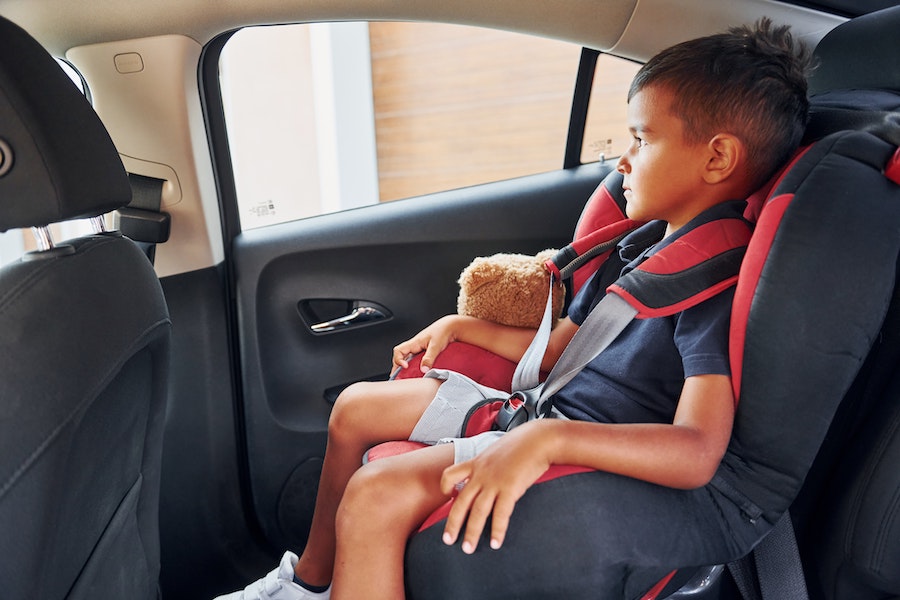If you’re a parent, you may have wondered about your child’s safety in water-related car accidents. It’s totally normal and we’ve all done it.
Its crucial to know how to keep your child safe and secure, regardless of the type of car seat you use.
Today we’ll take a look at whether car seats can float in the event of a water-related car accident. But first, let’s take a look at some facts about water safety and car accidents.
Car Accidents Near Water
According to the NHTSA’s 2020 Fatality Analysis Reporting System (FARS), there were a total of 321 fatalities in motor vehicle crashes involving a submerged vehicle in the United States in 2019.
Most drownings occur within 10 feet of the water’s edge, which means you and your child might have little time to escape.
Do Car Seats Float?
Now let’s tackle the question at hand: do car seats float? It’s not exacly a straightforward question and it depends on several factors, such as the type, age, and weight of the car seat, as well as the depth and temperature of the water.
Factors Affecting Buoyancy
Several factors affect the buoyancy of a car seat, such as the material density and weight of the car seat, the age and size of the child, and the type of car seat.
Rear-facing car seats for infants may be more buoyant than forward-facing car seats for toddlers, and car seats designed to be used with a base may be less buoyant than those installed directly in the car.
Here’s our take: Regardless of whether your car seat floats or not, it’s best to be prepared and know what to do in the even of an emergency.
Tips for Water Safety and Child Car Seats
Regardless of whether your car seat floats or not, it’s essential to be prepared for emergencies.
Instead of wondering if your car seat floats it’s proabably better to ask yourself if you’re prepared in the event of a water emergency.
Here are some tips to ensure your child’s safety in water-related car accidents:
- Choose the right car seat: Ensure the car seat fits your child’s age, weight, and height. Check the car seat manual to make sure it’s not too heavy for your child and that it can be secured correctly. Also, did you know car seats expire? It may be time time for an upgrade so be sure sure to check.
- Secure the car seat properly: Check that the car seat is installed correctly, and the straps are snug and secure. Hate struggling with securing car seats? (Yes, we all do) your local police station can help! They’re often providing car seat checks and assistance so utilize that to your advantage.
- Keep an emergency tool in your car: These are tools such as a window breaker, seatbelt cutter, or both. Toss them in the truck or cargo area so they are in your car at all times. In case of an emergency, this tool will come in handy to break the glass window or cut the seatbelt.
What Should Parents Do to Ensure Their Child’s Safety?
It’s essential to ensure that your child’s car seat is installed and used correctly, regardless of its buoyancy.
The American Academy of Pediatrics recommends that children be placed in rear-facing car seats until they are at least two years old or reach the highest weight or height allowed by the car seat manufacturer.
After that, children should use forward-facing car seats with a harness until they reach the highest weight or height allowed.
Once children outgrow their forward-facing car seats, they should use booster seats until they are tall enough to use the car’s seat belt properly.
It’s vital to follow all safety guidelines provided by the car seat manufacturer, check the car seat for proper installation and adjustment, and ensure that the child is correctly secured in the car seat.
Never place a car seat on a soft surface, such as a bed or couch, as this can increase the risk of injury in case of a crash.
The Verdict: Do Car Seats Float?
In conclusion, while car seats can technically float, this does not mean that they are designed to do so or that they are safe for use in water. Err on the side of caution.
Parents should focus on ensuring that their child’s car seat is installed and used correctly, regardless of whether or not it is buoyant.
By following all safety guidelines and using car seats appropriate for their child’s age and size, parents can help to ensure their child’s safety in the car.
Looking for the best car seats?
Click below to browse popular brands and and read some parent reviews.




